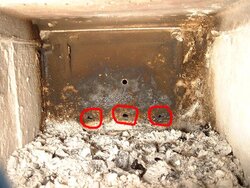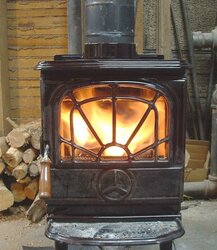Battenkiller
Minister of Fire
precaud said:To close off most of the gap, I took a piece of perforated aluminum from an old electronics chassis, doubled the thickness on one end, and then cut/bent/pounded it into shape to fit snugly on the fence.
I take it you are aware that the melting point of most aluminum alloys is below 1200ºF?




